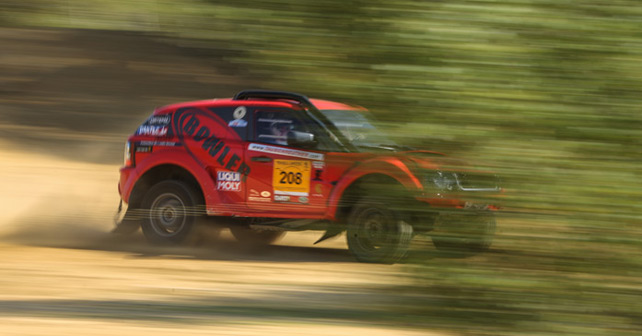
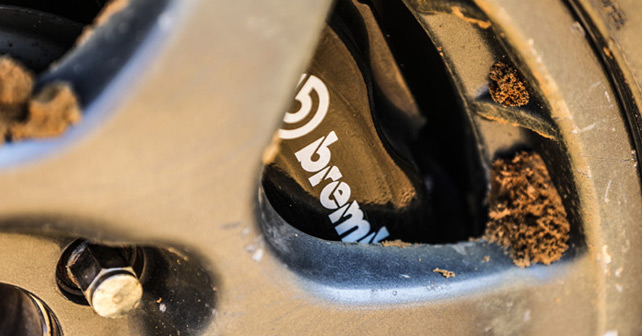
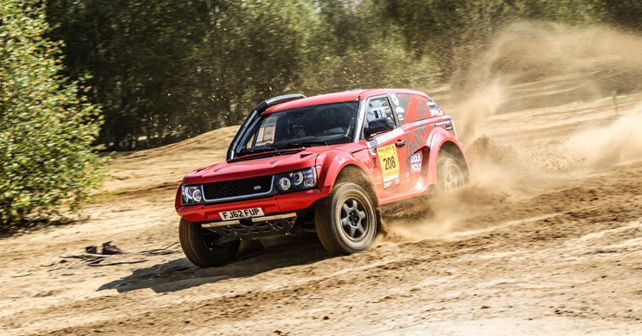
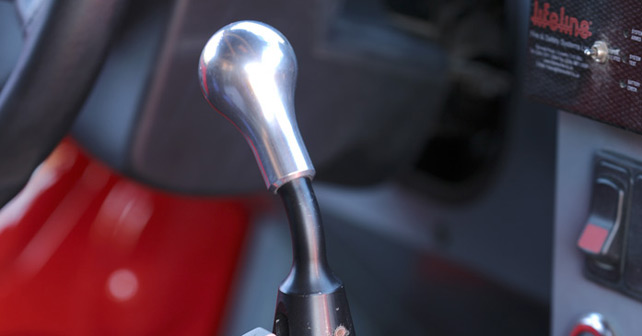
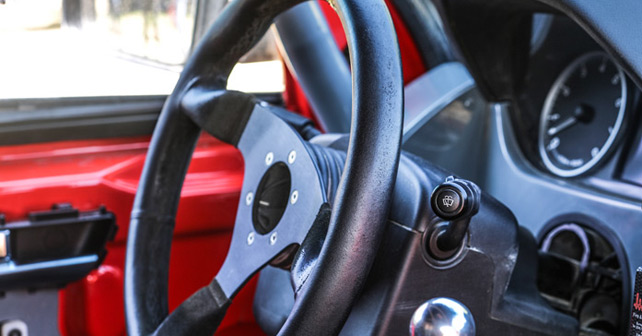

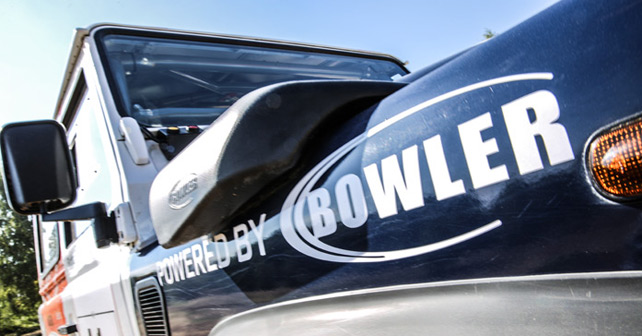
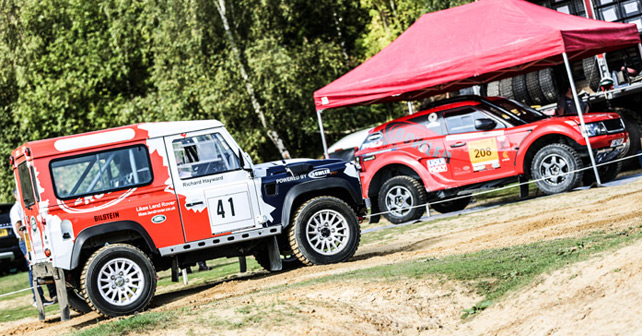
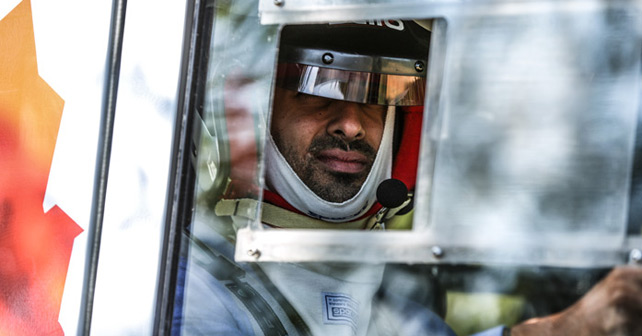

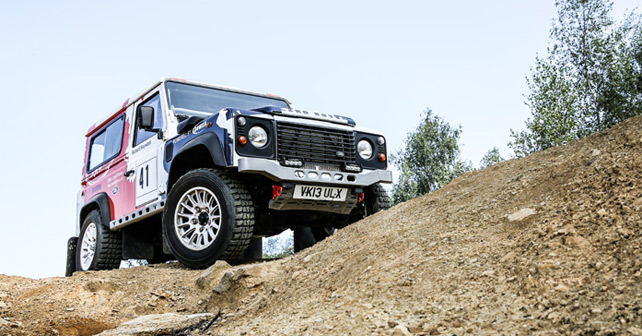

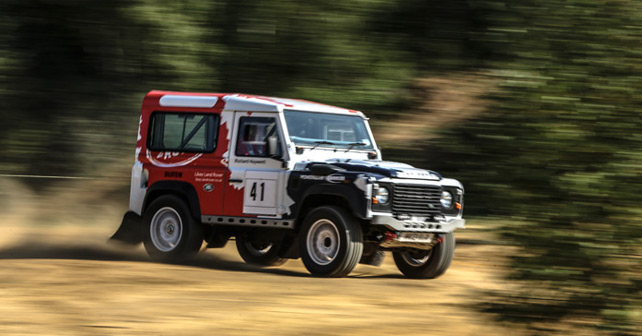
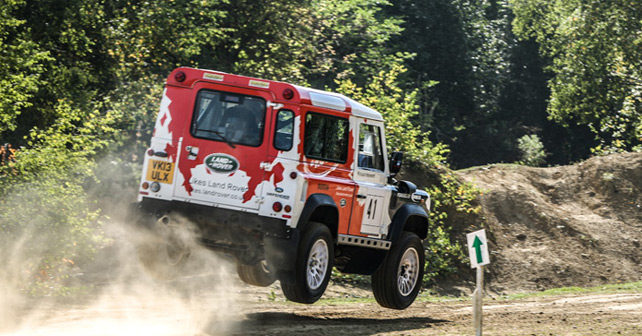
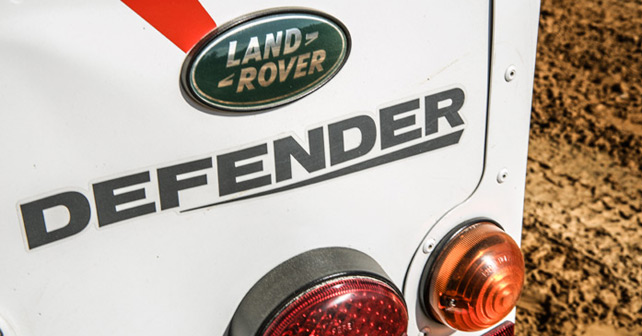

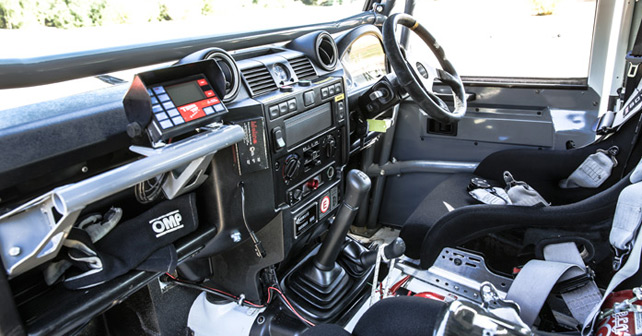
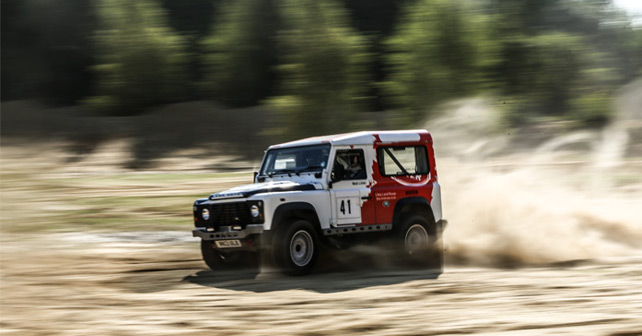
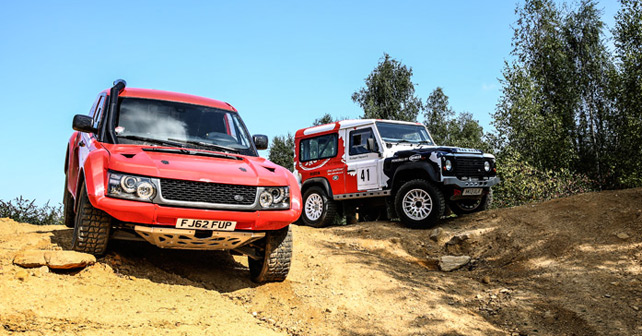
If you want to cover the harshest terrain on the planet at light-speed, you need one of these. One of these, by the way, also happens to be among the most incredible machines that we’ve ever had the privilege of driving.
If you want to cover the harshest terrain on the planet at light-speed, you need one of these. One of these, by the way, also happens to be among the most incredible machines that we’ve ever had the privilege of driving...
This is a day that I’ve dreamt of for a very long time. The first time I heard of Bowler was many years ago when Richard Hammond strapped himself into the cockpit of a Land Rover Bowler Wildcat and exclaimed, “I am a driving God!” Typically, he comes across as quite an unassuming kind of guy – so for him to feel that way, and make such a claim on camera must have meant that he was behind the wheel of something pretty special indeed.
Now, I sold my rally Gypsy last year – and I’ve regretted it ever since. Sure, it was no Bowler, but it served me well through three Raid-de-Himalayas, one Desert Storm, an Indian National Rally Championship round, and several local events over the years. Off late, though, a lack of time and funds meant that it was just gathering dust. And so I did the sensible thing and gave it a new home. The trouble is, though, the racing and rallying bug is nothing if not obstinate. Once bitten, you’re hooked for life.

And I would be lying if I said that I don’t dream of being on the start line of the Raid – or, what the heck, the Dakar even (it is a dream after all) – in a Bowler. Now that would be something! As unlikely as that eventuality might be, I simply had to get myself a proper test of these incredible machines.
If you want to dismiss dunes to oblivion, soar over crests, and cover the harshest terrain on the planet at light-speed – these are the machines that you need. Bowler has been manufacturing rally / raid machines on Land Rover platforms for over 25 years. And so, a couple of years ago, the two companies formalised their relationship – as a result, Bowler’s now proudly sport ‘Powered by Land Rover’ badging. They also get additional access to components and technology from the factory, while Land Rover gets the benefit of the toughest proving ground on the planet – because if these vehicles can perform in competition, they’ll certainly be able to manage the nip down to the shops. But we weren’t in the UK for a trip to the grocery store – we were at a special Bowler test track to get a proper taste of just what these massive machines are capable of.

The machine that we started with was the Defender Challenge 90, which is a relatively inexpensive rally machine (well, at 50,000 Pounds anyway) that Bolwer developed recently on the platform of the Defender 90 to run a one-make series in the UK. The drivetrain is virtually stock, but the 2.2-litre diesel engine has been massaged to produce about 170 horsepower. It’s stripped out of course, and it has a seriously intricate roll cage, but the body-shell is pretty standard. It’s sitting on twin Bilstein dampers at each end, and massive Kumho rally tyres. Getting into the Defender means climbing up and into the cabin. At first, it feels like you’re sitting in a tree house – that’s how far off the ground you actually are. As Bowler test driver Edd Cobley takes me out for some sighting laps, all I can think of is, “How are we not toppling over?” The Defender, after all, is pretty old school. It’s a proper off-road machine, but it’s not exactly what comes to mind when you think ‘rally car.’ In fact, I drove a special edition Defender last year, and I can confirm in no uncertain terms that it hasn’t been corrupted by modern technology in any way – with the exception perhaps of the modern motor that it shares with the rest of the rest of the Jaguar Land Rover family.
Edd starts off slowly, showing me the track – and then it’s as if he flicks a switch and turns into a raving lunatic. He’s attacking corners like he’s in a WRC machine. He’s hurling this beast into dips, ditches and bumps with equal vigour – again, how have we not ended up on the roof as yet? He leaves the transfer case in High, but puts the diff locks on to ensure that the differential is dividing power equally between the front and rear wheels. After scaring the living daylights out of me, he pulls over gently and says it’s my turn. Gulp!

The first thing that you notice about this car is the massive amount of torque produced by this diesel engine (450Nm). You use first just to get going, immediately shift to second, and then third. In fact, you could do virtually the whole track in third, and even use it to pull out of hairpin bends – that’s how much torque it has available. The gearbox is standard, so the shifts are smooth and fast. The brakes are pretty impressive, and the grip levels are astounding. And this massive machine turns-in so well that it catches you completely off guard. It all looks so easy from the outside, but from the driver’s seat it’s an intensely physical experience (I write this a few days after that incredible day, and I’ve still got the bruises to prove it). You’re trying to stay smooth and not fight the car the whole time. And, like any other race machine, you have to learn to fight your initial fears and just learn to trust the machine.
Once you do that though, you realise that – incomprehensibly – Bowler has managed to make the Defender 90 a really good rally car. Not only is it responsive, stable, and confidence inspiring, but it can take a beating like no other machine. You can jump it pretty easily too – although that does feel a bit like being astride Dumbo, the Flying Elephant. Of course, there’s a lot of steering input required – and I would have preferred a steering wheel of a slightly larger diameter, but there isn’t enough room in the cabin. Bowler is developing a faster steering rack, but they prefer to use standard production parts if they can. Naturally, these are cheaper and easier to replace – but the Bowler engineers also have a lot of faith in the strength and durability of the original Land Rover components in the vehicle.

Edd is leading the one-make Defender championship this year, and says in some events he’s even caught and passed wide-eyed Subaru Impreza drivers who are competing in other categories. Of course, they’re left aghast at seeing this massive machine bearing down on them. I, for one, am glad he’s sitting next to me because he’s not only telling me where to go but he’s also playing the role of rally Yoda to perfection – “Slow in, fast out, get it turned in, smooth is fast,” are some of the instructions he’s yelling in the middle of “tightens,” and “slow-left...”
Right, my initiation over, it’s now time to jump into the much more serious EXR. Now, this is a completely different beast altogether. The EXR is a fourth generation rally / raid machine from Bowler. It’s based on the previous Range Rover Sport platform – well, the current Discovery platform for that matter. They are developing a new car on the aluminium monocoque of the new RR Sport, but for now this is one of the most advanced cross-country rally machines that you can buy. But it doesn’t come cheap. It’ll run you almost 2,00,000 Pounds.
Double gulp! You see, there are a lot of things to hit on this course. And this machine has 300 horsepower. Yes, it has a 5.0-litre V8 under the bespoke bonnet, which can actually produce a lot more, but it’s running a restrictor plate to limit the horsepower and comply with the cross-county T1 FIA regulations. It’s also running a racing-spec sequential gearbox that’s worth about 18,000 Pounds. The three-way adjustable Donerre dampers are 2,500 Pounds a corner. The auto hydraulic jacking system that’s fitted to the car is 3,500 Pounds. Needless to say, this is a serious machine. The only stock components on the body are the front grille, lights, windshield, and door handles. But, mechanically, it’s got quite a few off-the-shelf parts – the Brembo brakes are lifted from the Range Rover Sport, as is the engine, and steering rack.

The combination of all this mechanical wizardry blends itself to create the most phenomenal machine that I’ve ever driven in all my life – and I don’t make that statement lightly at all!
You set off, and initially take it very gently around the track in an attempt to get acclimatised to the EXR – but nothing can actually prepare you for the anger and the fury that’s unleashed the first time you step on the accelerator pedal with any sort of intent whatsoever. You hit the gas, and immediately the scenery turns into a blur. A quick tug of the gear lever to go up a gear, and ‘wham’ more speed – more blur! Another tug to instantly go up one more gear with no let up in the power delivery at all. The incredible thing isn’t the power though, it’s the way the suspension completely dismisses the terrain – any terrain – into submission.
You fly over a crest, and I do mean fly, and have to catch the car on landing because now you’re going so much faster than in the Defender. Slowing for the sharp right-hander is easy – the brake pedal requires very little effort, and there’s incredible grip from the tyres. The only tricky bit is that you have to ensure that the wheels are pointed absolutely straight before you get back on the gas. If you’re too keen on the accelerator pedal, the 60:40 torque split will ensure that you get a proper powerslide pulling out of tight corners. You really have to feather the throttle to ensure that you don’t get in over your head – especially since the suspension inspires so much confidence that you really do begin to believe that you are actually a driving God. There are very few things in life that can compete with powering out of a corner on dirt, with one hand at full opposite lock while the other reaches for the gear lever to change up and deliver even more power. This is what life is all about!

The EXR is a proper living thing. I’ve never driven anything like it in my life. It has so much torque, so much power, and so much grip that it’s almost incomprehensible. And because the suspension is so capable, you can use the power to sort everything out. If you run wide, for instance, just apply more power to get back in line. But, after driving the EXR, I have so much more respect for the guys who compete in rally / raid events. Sure, you don’t take a beating like you do in the Gypsy – but the EXR gives you a proper shoulder workout.
When you’re behind the wheel though, you’re fuelled entirely by adrenalin. It’s only when you get out of the EXR that you realise how physical it really is. We only did a couple of laps, but it was more than enough to get a real appreciation for the machine – not to mention the crew who pilots them. Even the EXR standing still looks purposeful and aggressive. It’s wide, squat, and butch – as well as properly loud. And when you take a peek at the source of all that noise and speed under the hood, you notice that the motor is set so far back in the engine bay that you could go head-first into a tree and come away with just cosmetic damage.
Imagine driving this machine in the Raid-de-Himalaya. I may never get out of third gear, and I could have one hand tied behind my back, but I would still win by a couple of hundred kilometres.
Supercars are fragile – this would eat them for breakfast on 99% of the terrain that covers this planet. The greatest machine I’ve ever driven? You bet!

Write your Comment on